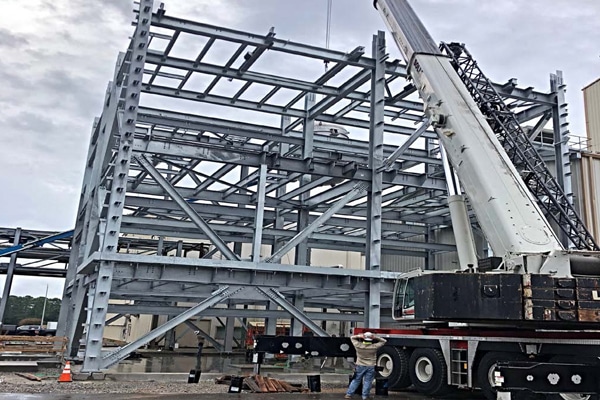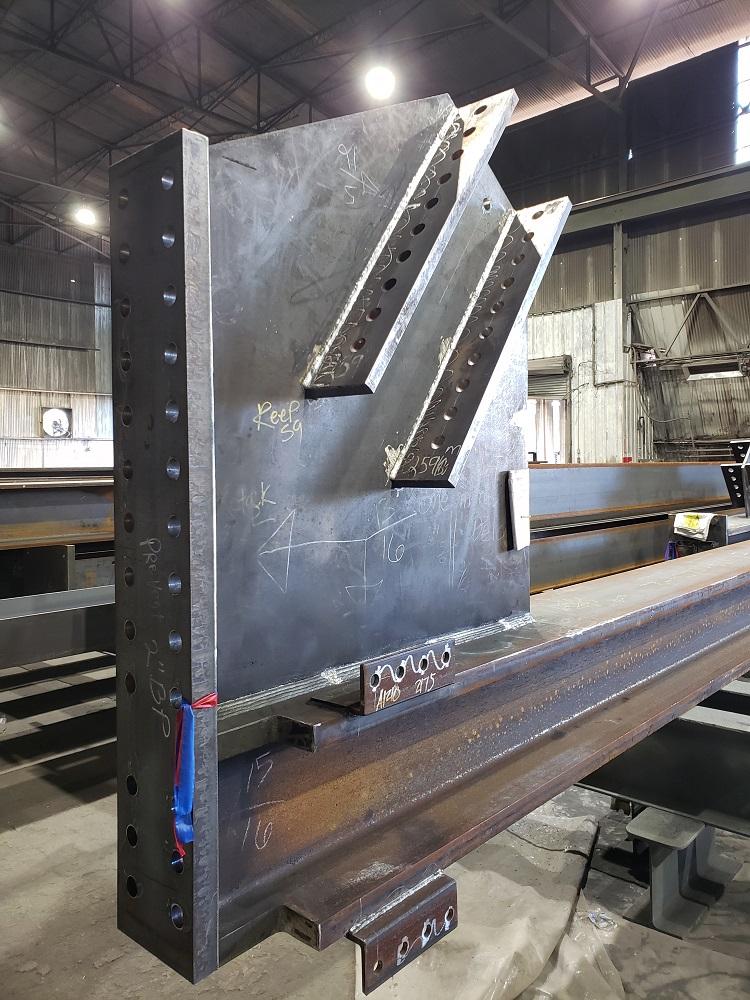Metal Fabrication Melbourne: Precision Design for All Requirements
Wiki Article
Comprehensive Analysis of Cutting-Edge Techniques in Steel Manufacture Sector
As the steel construction industry remains to advance, the combination of cutting-edge strategies has come to be vital for staying affordable and meeting the needs of modern production standards. From laser reducing developments to the utilization of robotics and 3D printing in steel manufacturing, the landscape of manufacture methods is swiftly altering. With each technology bringing its own collection of benefits and obstacles, a thorough analysis of these strategies is extremely important for business intending to improve their procedures, boost accuracy, and inevitably, boost the quality of their steel fabrication result. In this dynamic market where innovation plays a crucial role, comprehending the nuances of these innovative techniques is not just an option yet a need for those wanting to advance in the ever-evolving world of steel construction.Laser Reducing Advancements
In the realm of steel construction, laser cutting developments have transformed the precision and effectiveness of steel shaping procedures. By taking advantage of the power of focused laser beam of lights, makers can currently achieve unmatched levels of precision when reducing via different kinds of metals. This modern technology makes it possible for intricate designs to be executed with very little product waste, making it an affordable option for markets calling for high accuracy elements.Among the key benefits of laser cutting is its ability to take care of a variety of products, consisting of stainless steel, aluminum, and carbon steel, easily. The process generates clean, burr-free sides, eliminating the need for added ending up steps. The non-contact nature of laser reducing minimizes the danger of material contamination, resulting in higher high quality end products.
In addition, laser cutting equipments can be configured to make swift, specific cuts, substantially reducing production time contrasted to typical reducing techniques. This rate and accuracy make laser cutting specifically suitable for automation settings where effectiveness is vital. As technology continues to advance, laser cutting is poised to play an increasingly important role in the steel construction sector.

CNC Machining Innovations
The advancement of CNC machining technologies has actually introduced a new period of precision and efficiency in the steel construction market. Computer Numerical Control (CNC) devices have revolutionized steel fabrication by using unrivaled precision and repeatability in the production process. Alpha reo. One of the key developments in CNC machining is the integration of innovative software application systems that make it possible for real-time surveillance and changes, leading to enhanced efficiency and quality assuranceFurthermore, the advancement of multi-axis CNC machines has permitted for the construction of complicated steel elements with elaborate designs that were previously testing to generate. These devices can perform a vast array of machining procedures, including milling, drilling, turning, and grinding, all with high levels of precision.
Additionally, the incorporation of automation and robotics in CNC machining has structured production processes, reduced lead times, and minimized the margin of error. This combination of cutting-edge innovations not only increases performance however additionally guarantees regular high quality throughout all made steel parts. Finally, CNC machining advancements proceed to drive improvements in the steel manufacture market, establishing new criteria for precision and productivity.
Automated Welding Technologies
Automated welding modern technologies have actually reinvented the steel manufacture market, enhancing efficiency and accuracy in the welding procedure. These innovative innovations utilize computer-controlled systems to automate the welding procedure, resulting in higher efficiency levels and boosted weld top quality. One of the crucial advantages of automated welding is the ability to perform complex welds with constant accuracy, decreasing the likelihood of errors and remodel.Robot welding systems go to the forefront of automated welding modern technologies, using unmatched speed and precision. These systems can handle a vast array of welding tasks, from easy to detailed, effortlessly (steel fabricators melbourne). By utilizing innovative sensors and software application, robot welders can adjust to variants in product and joint geometry, making sure an attire and trustworthy weld
Additionally, automated welding innovations boost workplace safety by reducing the exposure of human welders to harmful fumes and extreme heat. As the steel construction market remains to progress, integrating automated welding technologies will certainly be essential for companies seeking to remain competitive and meet the expanding needs for premium welded products.
Robotics Combination in Construction
Using robotic systems in fabrication processes has become a pivotal strategy for enhancing performance and accuracy in modern-day production atmospheres. Robotics combination in steel construction provides a myriad of benefits, consisting of raised performance, enhanced quality assurance, and enhanced security actions. These advanced robotic systems are equipped with innovative sensing units and programs capacities, allowing them to execute detailed jobs with a high level of precision and repeatability.Among the essential benefits of robotics assimilation in steel construction is the ability to automate recurring jobs, such as product handling, reducing, welding, and assembly processes. This not only speeds up manufacturing cycles yet likewise decreases the threat of human mistake, leading to greater general item high metal fabrication melbourne quality. Additionally, robotics can operate 24/7, dramatically increasing production outcome and meeting limited project due dates.

3D Printing in Steel Production
Having actually reinvented the steel manufacture market with robotics assimilation, the burgeoning expedition of 3D printing in steel production is positioned to additional advancement the realm of contemporary manufacturing techniques. 3D printing, likewise referred to as additive production, offers extraordinary style flexibility and intricacy, making it possible for the creation of elaborate steel frameworks that were previously unattainable through conventional manufacturing methods. By utilizing computer-aided style (CAD) software application, suppliers can specifically regulate the layer-by-layer deposition of steel product, causing parts with improved performances and geometries.Among the key benefits of 3D printing in steel production is its capacity to lower product waste dramatically. Unlike subtractive production procedures where excess material is trimmed away, 3D printing just makes use of the needed quantity of steel required for the final part. This performance not just results in cost savings yet likewise lines up with lasting production techniques by minimizing environmental impact.
Furthermore, 3D printing makes it possible for fast prototyping and customization, permitting the manufacturing of little batches of complex steel components with short lead times. As the technology remains to mature and become much more accessible, its assimilation into mainstream steel fabrication procedures is expected to drive innovation and performance across the sector.
Final Thought
In verdict, the steel manufacture sector has seen significant developments in methods such as laser cutting, CNC machining, automated welding, robotics combination, and 3D printing. These innovative innovations have actually revolutionized the method steel items are manufactured, causing raised cost-effectiveness, precision, and performance. Continued investment in these ingenious methods is vital for the market to stay competitive and meet the needs of modern-day production processes.As the steel fabrication market continues to progress, the assimilation of cutting-edge techniques has actually come to be necessary for remaining competitive and meeting the demands of modern manufacturing standards.One of the essential advantages of laser cutting is its capability to manage a large array of products, including stainless steel, light weight aluminum, and carbon steel, with simplicity.Automated welding technologies have actually reinvented the steel manufacture market, enhancing performance and precision in the welding procedure.Having transformed the steel manufacture market through robotics combination, the burgeoning expedition of 3D printing in steel manufacturing is positioned to further breakthrough the realm of modern-day manufacturing methods.In conclusion, the steel manufacture industry has actually seen significant improvements in techniques such as laser cutting, CNC machining, automated welding, robotics combination, and 3D printing.
Report this wiki page